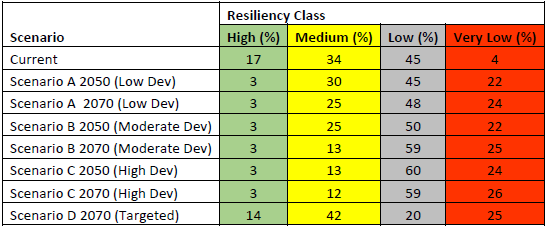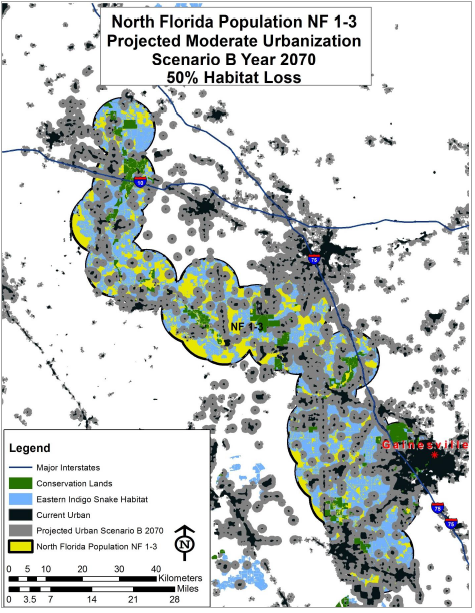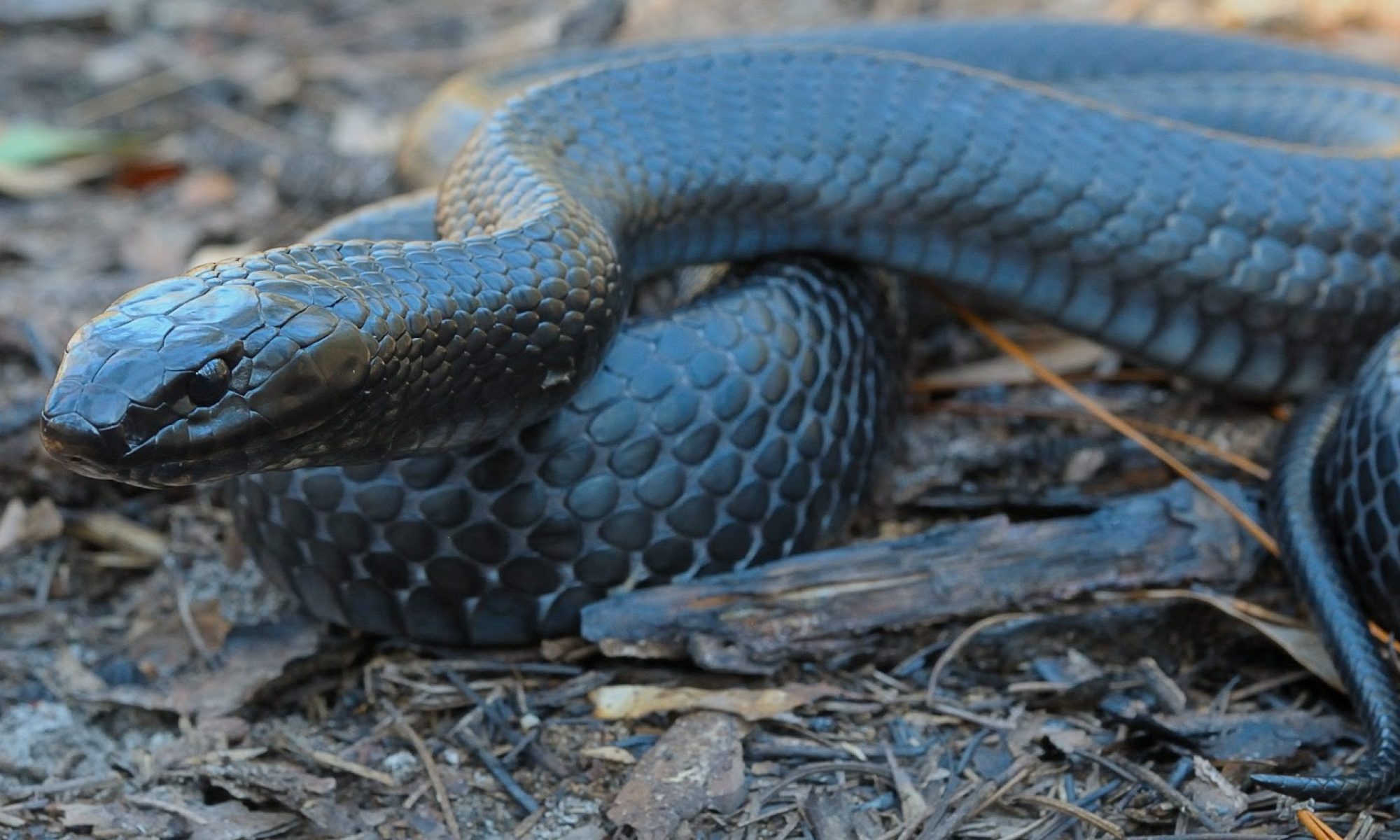Based on our assessment, future overall eastern indigo snake population resiliency is low to very low. In the future Scenarios A-C, the majority (66 to 77%) of the currently extant populations (53) are expected to be in low to very low resiliency condition and 13% (7) are likely to be extirpated. High to medium resiliency are predicted for 9-22% of the extant populations. In contrast, for the conservation focused scenario, low to very low condition populations make up 45% of the extant population and high and medium resilient populations make up 11 and 30% of the total, respectively. Medium to low and very low resiliency populations occupy about 12-30% and 65-85%, respectively, of the total current population extent (Table 10). The highly resilient eastern indigo snake population in the Southeast Georgia region occupies about 3% of the total current population extent. The Southeast Georgia population (GA 2-4, Fort Stewart) is the only population that remains highly resilient in all future scenarios without targeted conservation. The most significant shifts in resiliency occur first between current condition and year 2050 (any scenario) where number of extant populations that are highly resilient (Figure 32) and their population extent (Table 10) declines considerably. Also while the number of populations that have low to very low resiliency is about the same across scenarios and time (Figure 32), the extent of those populations increases (Table 10). The next considerable drop in resiliency is apparent in Scenario B by year 2070 when the number of populations in medium resiliency (Figure 32) and their population extent (Table 10) declines by about half from the current condition. The decline of populations in North Florida and the northern portion of Peninsular Florida are important losses in representation and redundancy and may have significant implications for long-term genetic connectivity across the range.

Our analysis did not predict how the population extents might fragment into smaller, potentially less resilient, populations as a result of urbanization. For example in North Florida, population NF 1-3 declines from medium to medium-low. This population is heavily impacted by urbanization (habitat loss and fragmentation), but is assumed to retain viable gopher tortoise populations and overall habitat quantity is high (> 150,000 acres, see Table 2 in section 5.2). However, resiliency may be lower than predicted for this population due to the extensive habitat fragmentation caused by the projected level of urbanization (about 50% habitat loss predicted, Figure 34). This level of fragmentation would likely cause this population to fragment into smaller and less connected populations; especially because of the amount of conservation land is minimal in this region (<25% of habitat is on conservation land). Population NF 1-3 is of particular interest because this population may be an important link among the all the other regions and may provide critical gene flow that supports the ecological and genetic diversity for the species. Other populations, particularly in northern portion of Peninsular Florida (e.g. CF 1-11 and CF 1-18), may also experience similar fragmentation effects due to urbanization and larger populations may fragment into smaller populations.
Other influencing factors not directly assessed in the future condition estimates include habitat loss and degradation from other land uses such as agriculture, forestry and mining. These land uses are likely to have some effect on populations that are projected to be less impacted by urbanization, such as populations in Southeast Georgia. Development and implementation of conservation actions within the Conservation Focus Areas may provide opportunities to reduce overall impacts to the species. However, eastern indigo snake population declines may still occur from cumulative, unsustainable mortality from vehicular traffic even if there are no appreciable declines in habitat quantity and quality (Godely and Moler 2013).

